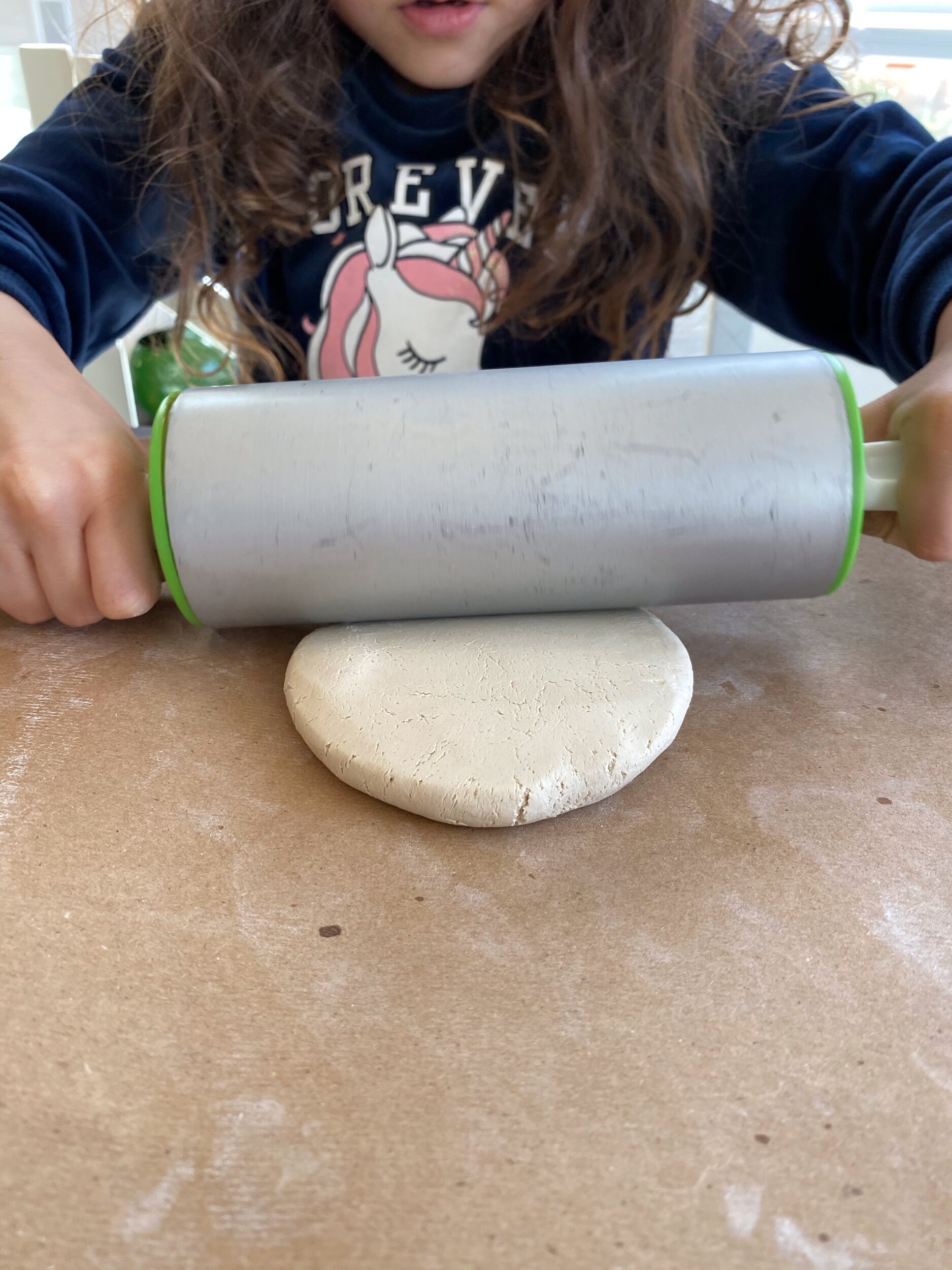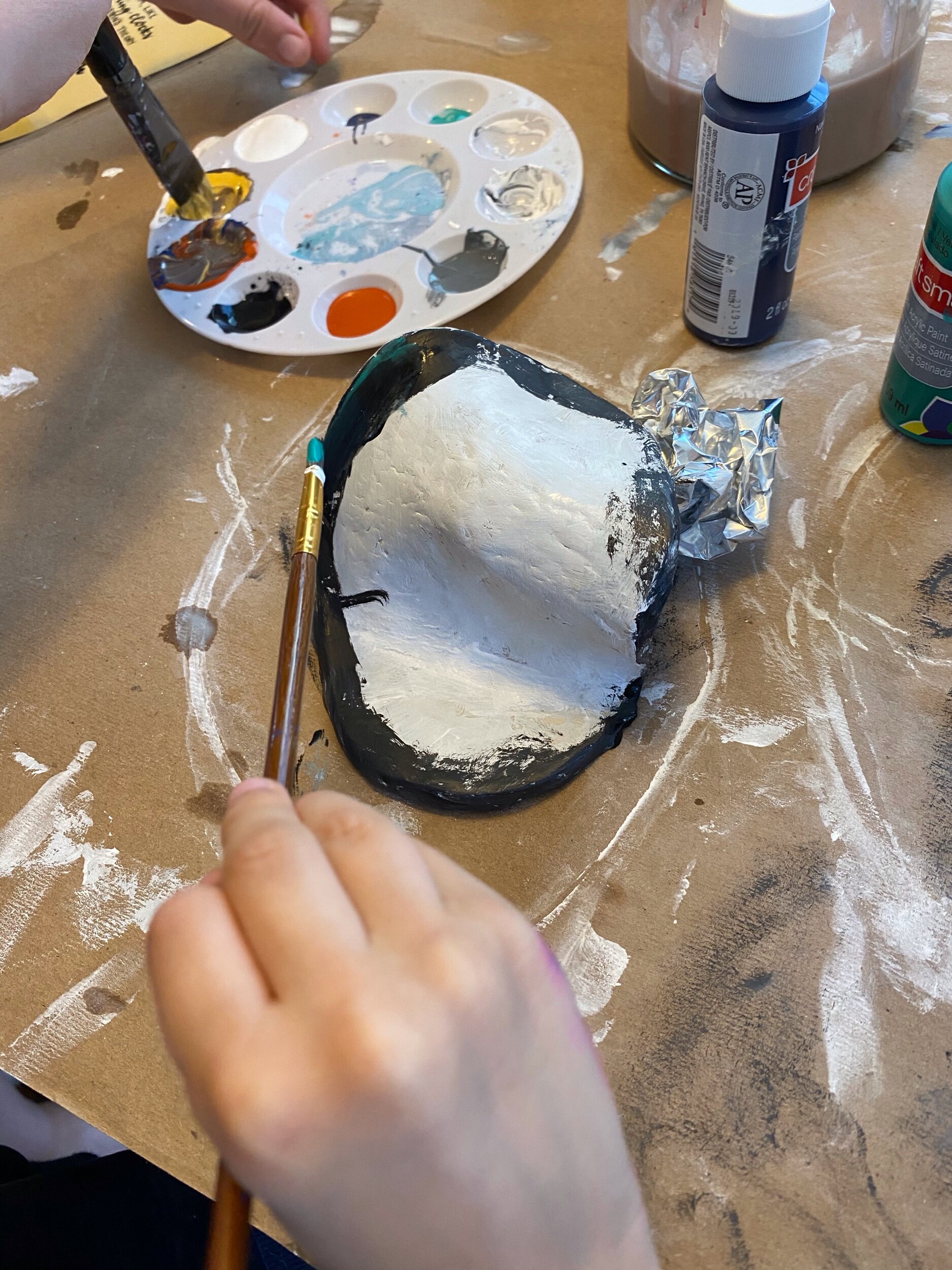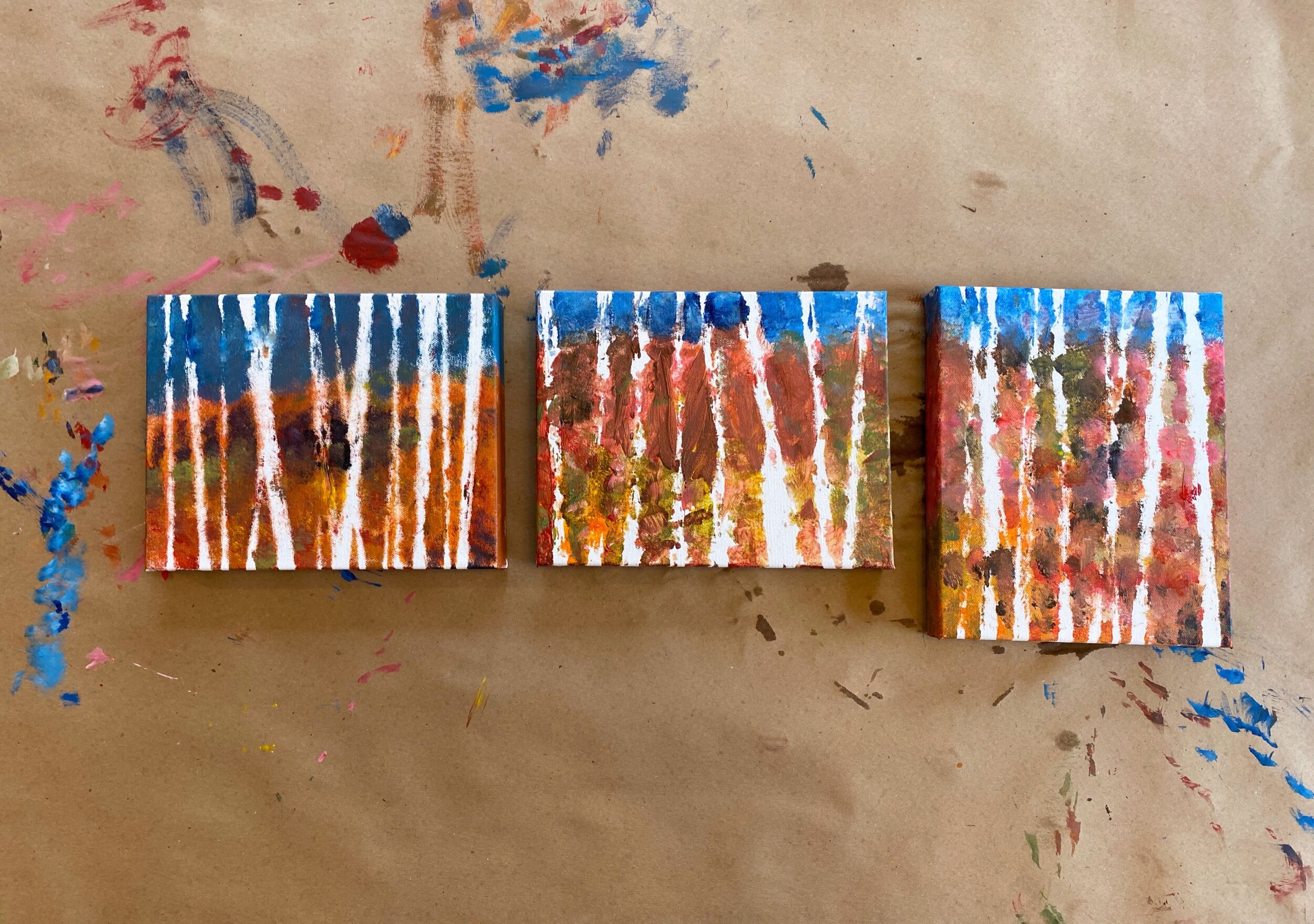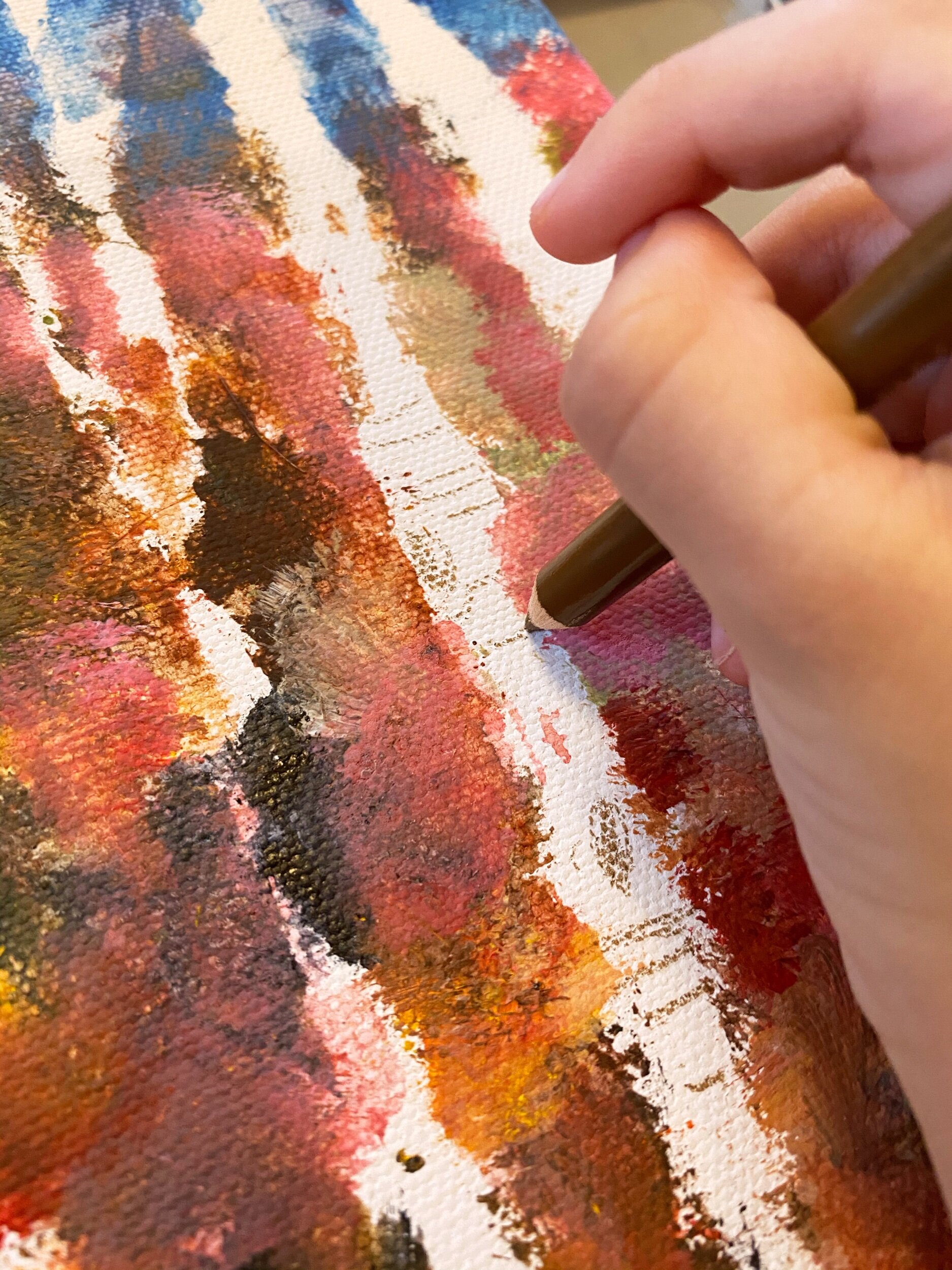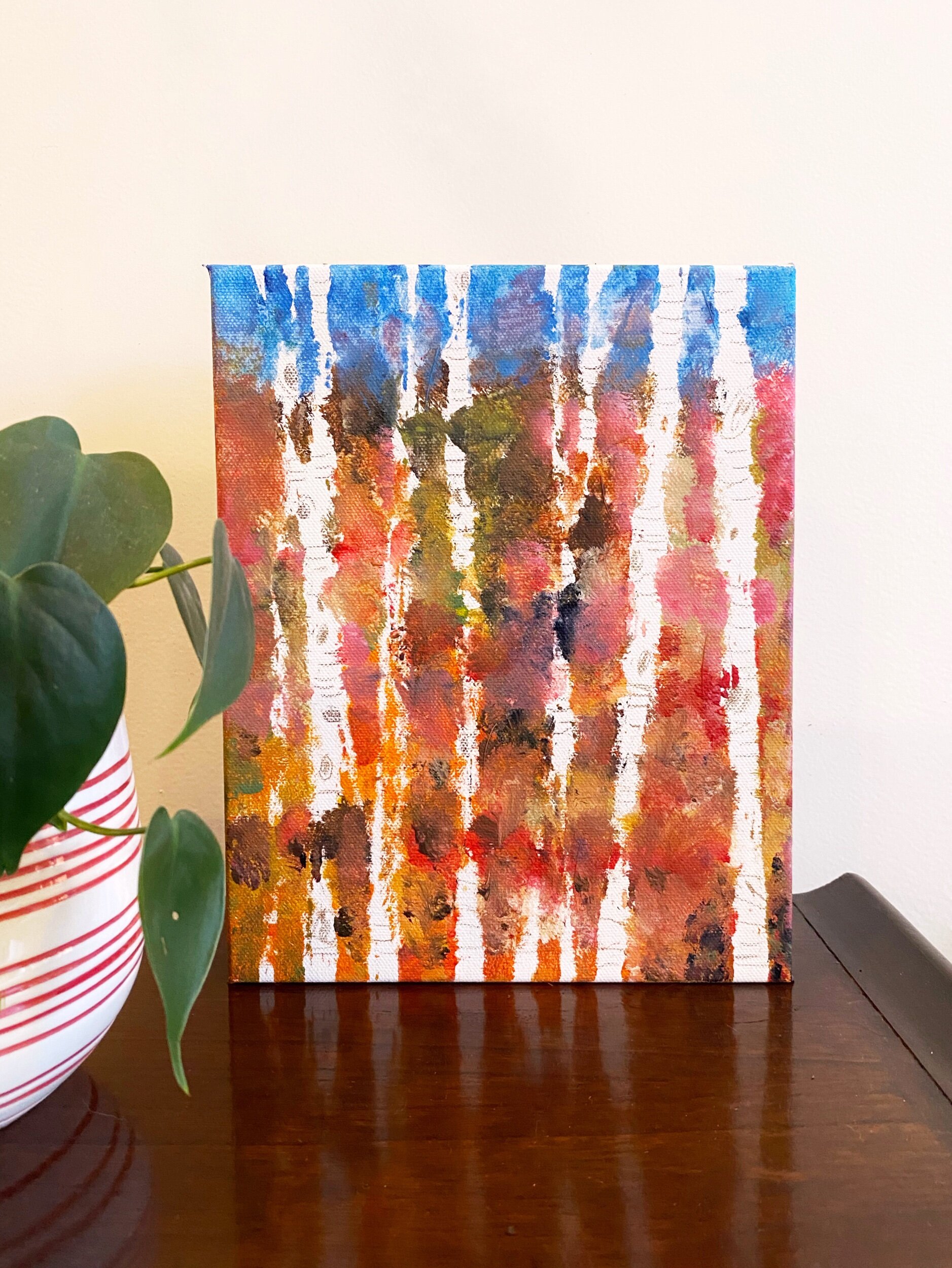Impasto is a painting technique where the paint is laid on the surface thickly so that you can see the texture of the brush strokes. It gives a lot of dimension to the canvas. Van Gogh often used this technique in his paintings. Sometimes he even used his fingers to spread the thick paint around! His painting “The Starry Night” is one of the most well known paintings in the world and is a great example of impasto painting with the thick swirls of paint.
Vincent Van Gogh - The Starry Night - June 1889
For this project with my kids, we used canvases, extra heavy acrylic gel, acrylic paints, and a stiff bristled brush.
Mixing the heavy acrylic gel into the acrylic paints gives them a nice thick texture. The stuff bristles on the brush make it easier to move the thick paint around your canvas. We painted a swirly night sky like Van Gogh using the brush and our fingers. I told the kids to pay attention to the direction of the brush strokes and how the colors of the moon and stars glow into the sky with strokes of yellow and white.
If you want to learn more about Van Gogh (and a lot of other artists), I recommend Vincent’s Starry Night and Other Stories by Michael Bird!


































